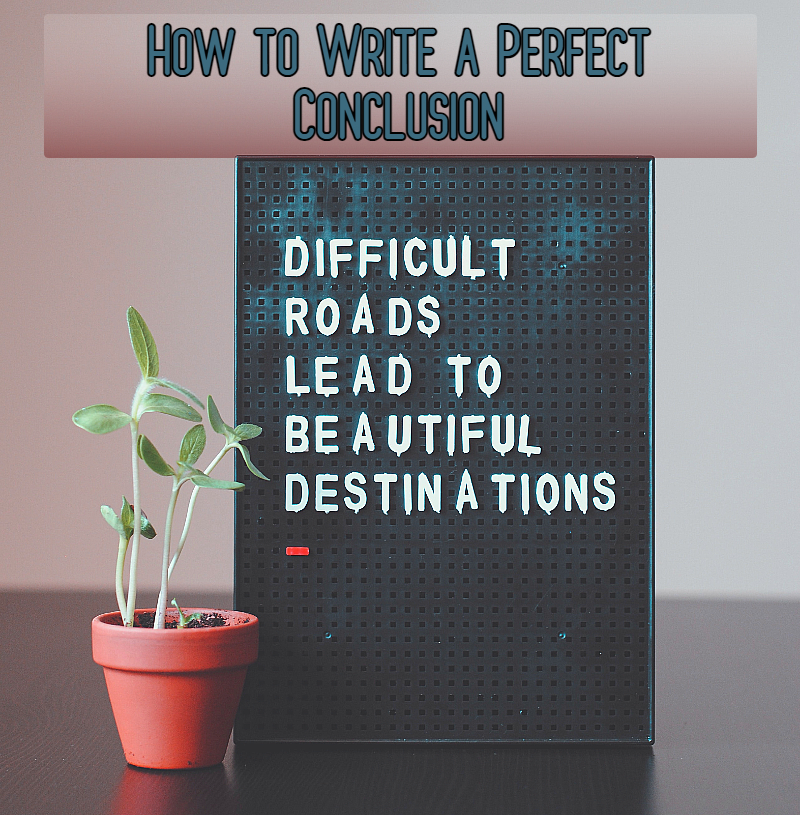Mastering the Art of Concluding an Academic Paper
August 22, 2023| Category: Writing Tips
The conclusion functions as the final, cohesive thought in a research paper, essay, or article, encapsulating and emphasizing the essence of the entire piece. Often considered the last opportunity to leave an indelible mark on the reader, an adeptly penned conclusion achieves several pivotal objectives:
- Synthesizes the essay’s primary arguments;
- Accentuates the broader implications and significance of the discussion;
- Imprints a lingering resonance, prompting readers to contemplate further.
This final part of your work should not only encapsulate the crux of your essay but also shine light on newfound queries, implications, or insights that the content and discussion of the essay has potentially revealed.

Step 1: Reconnect with Your Central Argument
Commence your conclusion by echoing your essay’s central claim. However, steer clear of verbatim repetition of your thesis statement. Instead, recast and refine the argument, showcasing its evolution and maturation since the essay’s outset.
Step 2: Collate and Converge Key Arguments
Then, meticulously distill the core arguments that have bolstered your central premise throughout the piece. Rather than offering a sequential recapitulation of every argument, integrate them in a way that highlights the intricate interconnections and emphases how all your arguments and claims laid out in the main body paragraphs cohesively contribute to the overarching narrative of the essay.
Step 3: Amplify the Broader Relevance
To give your conclusion more depth, try expanding your viewpoint. Deliberate upon:
- The novel insights or paradigms your essay might have introduced;
- Potential trajectories for subsequent research or exploration it has illuminated;
- Practical implications, forecasts, or applications that emanate from your discourse;
- Its relationship or contribution to more extensive debates, conversations, or themes in the domain.
The quintessential goal is to underline the profound significance of your claims, be it within the academic realm or the broader societal landscape. Concluding with a robust, evocative statement can captivate and stimulate your reader, fostering a sustained engagement with your topic.
Traps to Avoid when Crafting a Conclusion
A compelling conclusion is as much about embracing effective strategies as it is about sidestepping certain common pitfalls.
1. Steer Clear of New Point:
While the body of the essay is the bastion for critical evidence and analysis, the conclusion isn’t the place for novel ideas. A tangential mention of broader outcomes or a pertinent quote that encapsulates your primary contention is acceptable. Yet, veer away from introducing new sources or notions that necessitate further discussion and explanation.
2. Evade Overused Concluding Phrases:
Certain phrases, albeit common, can dilute the potency of a conclusion. Phrases such as:
“In conclusion…”
“To summarize…”
While not inherently detrimental, they can sometimes render the prose formulaic. Let the natural progression and reinforcement of your arguments signal the essay’s wind-up.
3. Uphold Conviction in Your Stance:
An essay can embrace diverse viewpoints but should culminate in a resonant and assured stance. Avoid ambivalent phrases like:
“One of several viewpoints…”
“Both sides present valid arguments…”
“The solution remains nebulous…”
Even if an essay traverses a multitude of perspectives, the conclusion should unequivocally champion your adopted viewpoint, positioning it as particularly persuasive.
Thus, an essay’s conclusion is not a mere epilogue; it is a crescendo, a synthesis that combines insights, reaffirms the central thesis, and propels readers into deeper reflection on the topic you discussed in your essay.
